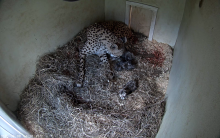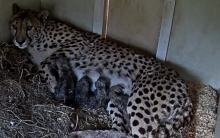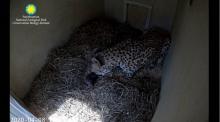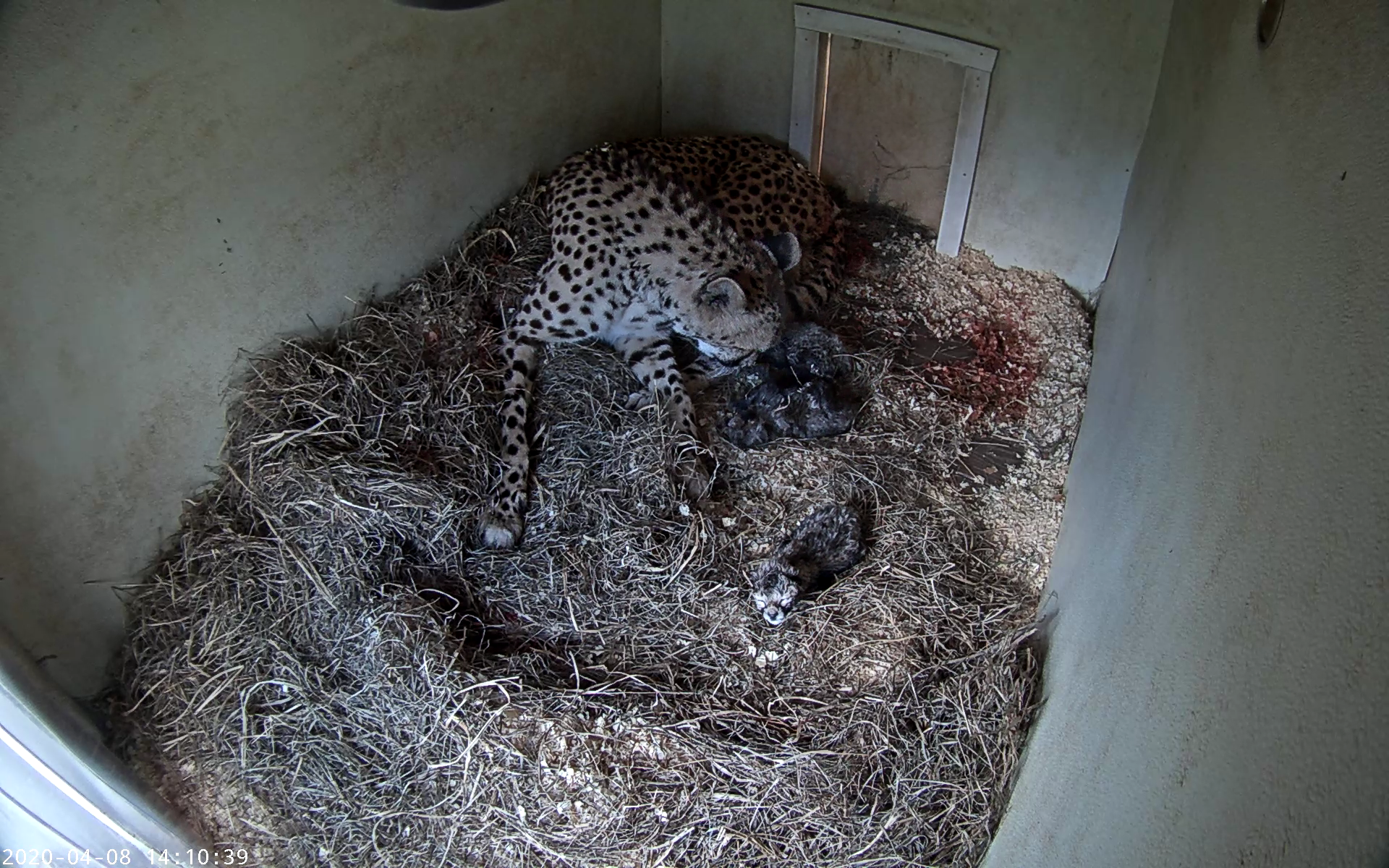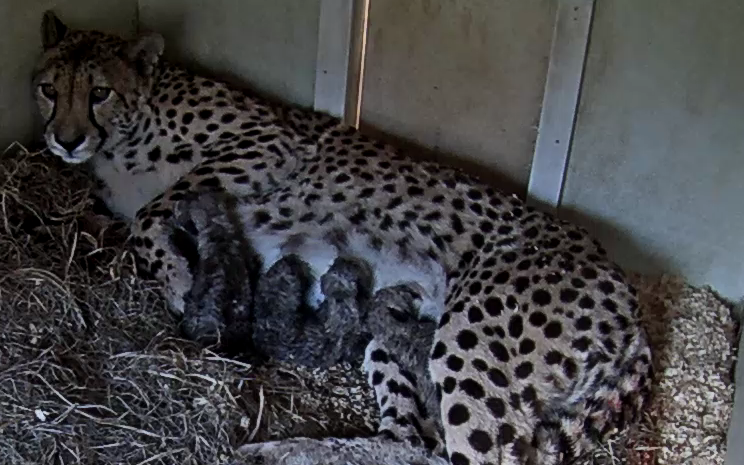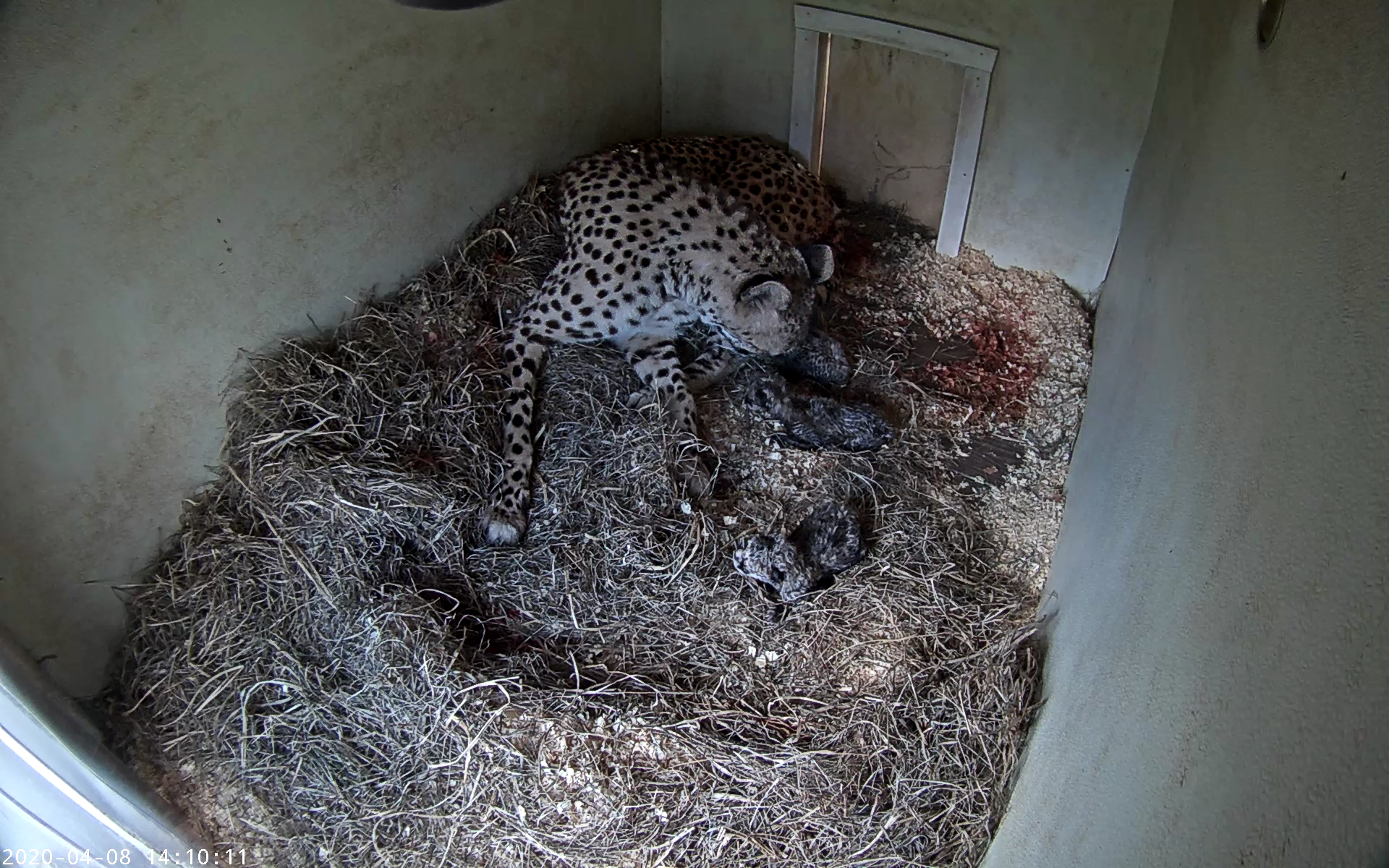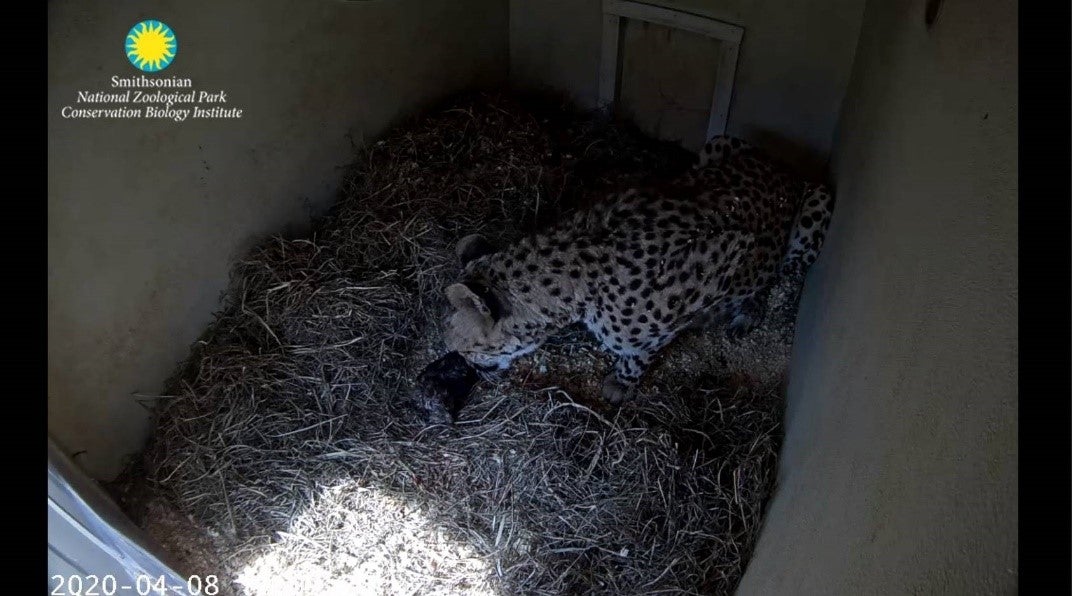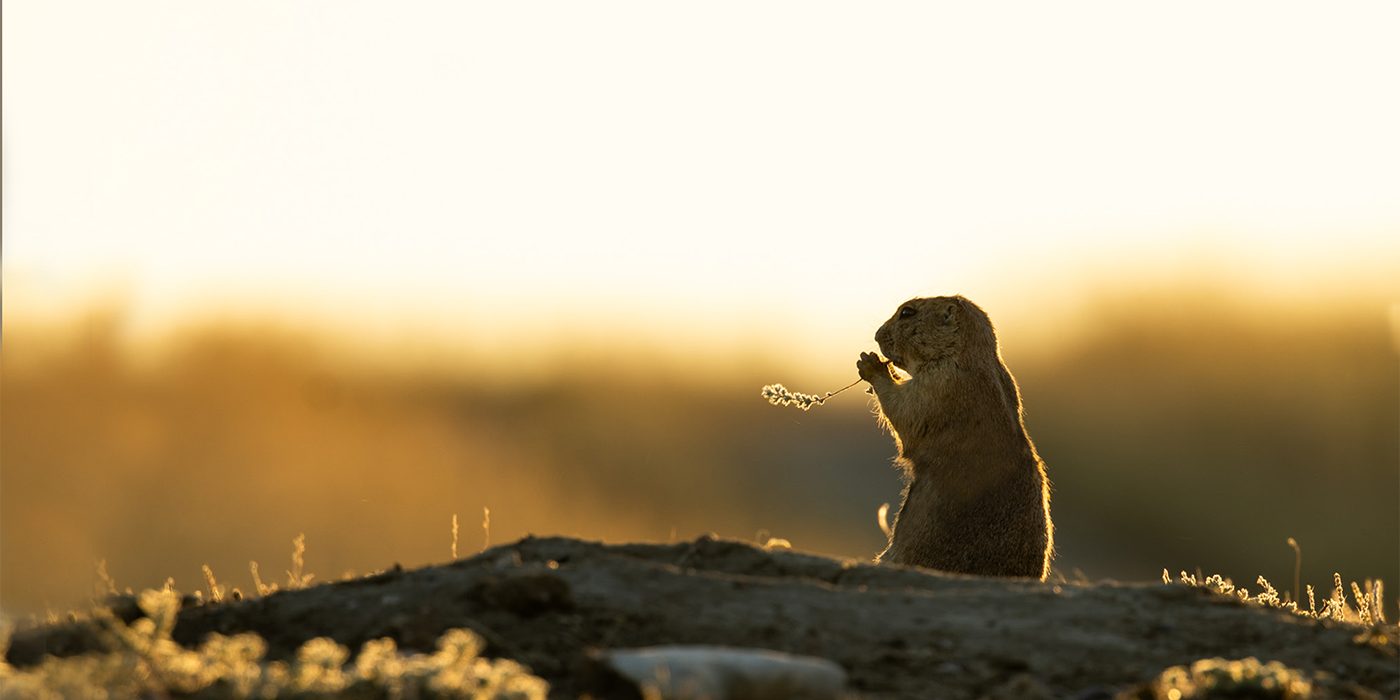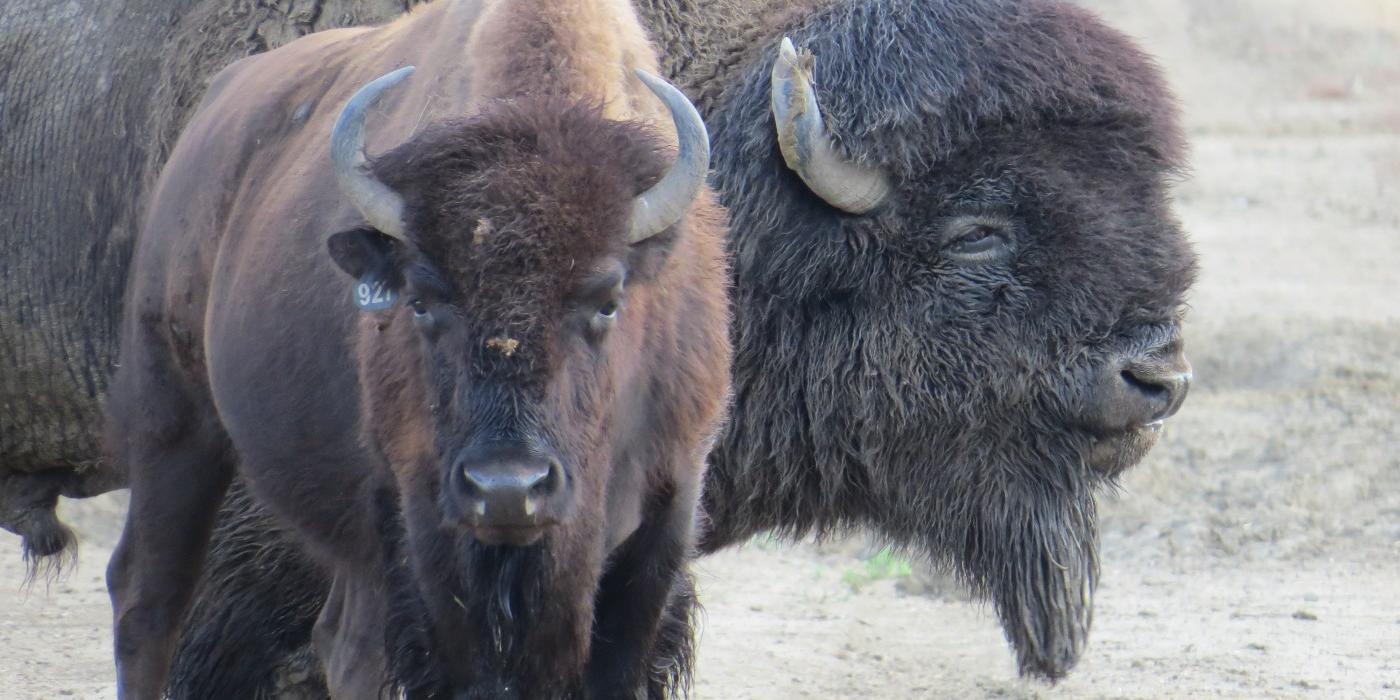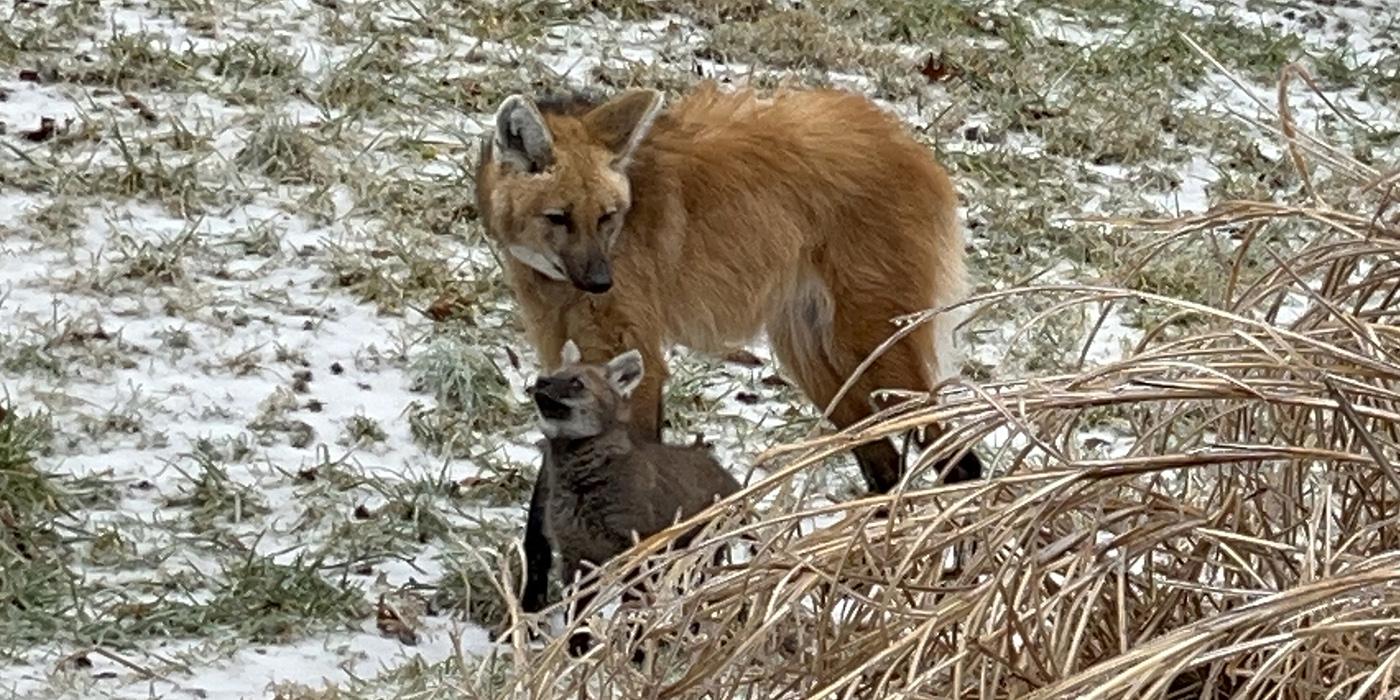Cheetah Cubs Born at the Smithsonian Conservation Biology Institute
Cubs Can Be Viewed on the New Live Cheetah Webcam
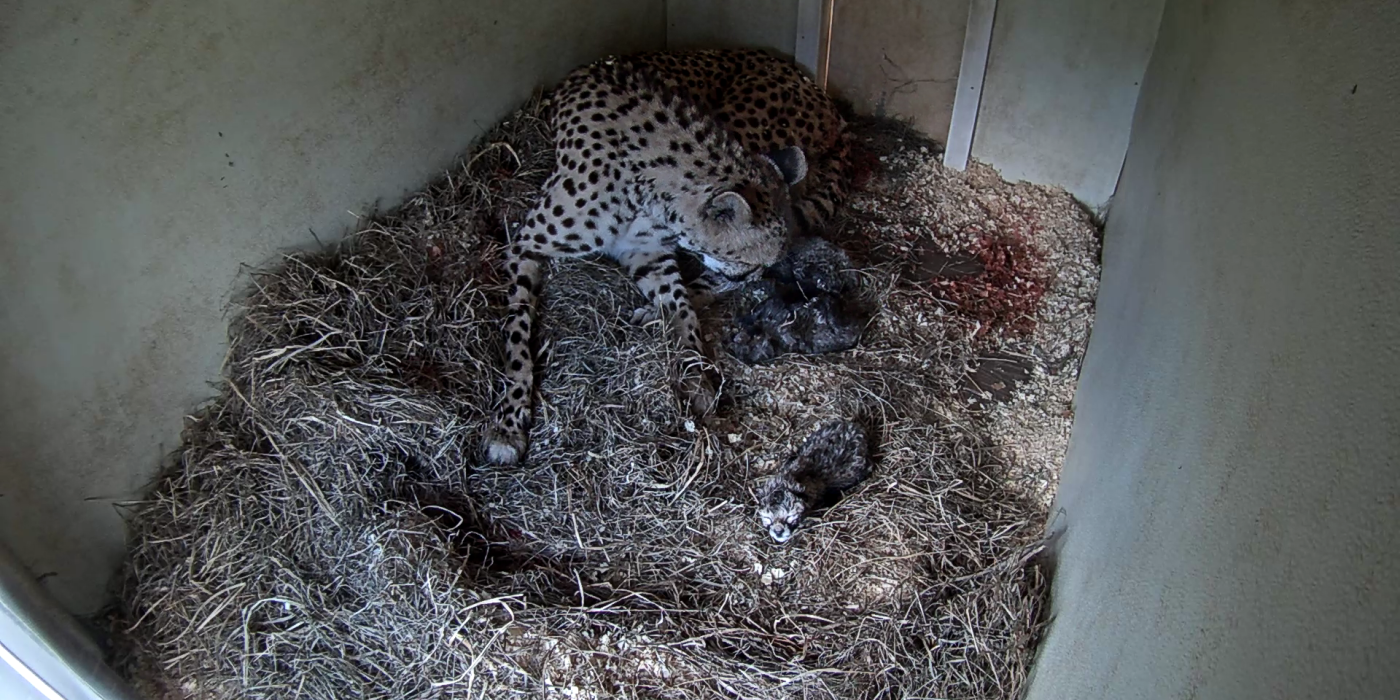
B-roll for media use:
Carnivore keepers at the Smithsonian Conservation Biology Institute (SCBI) in Front Royal, Virginia, are about to welcome a litter of chirping cheetah cubs. Five-year-old female Echo is having contractions and birthed one cub already shortly after 11 a.m., which can be viewed via the Cheetah Cam. They were sired by 4-year-old Scott. Animal care staff will leave Echo to bond with and care for her cubs without interference, so it may be some time before they can determine the cubs’ sexes.
Staff are closely monitoring Echo and her cubs’ behaviors via webcam, which is now live on the Zoo’s website. Virtual visitors can observe Echo and her cubs on this temporary platform until the cubs leave the den. Keepers provided Echo with access to multiple dens, so it is possible she may move the cubs to an off-camera location. An Animal Cam Educational Packet is available to parents and educators looking for student and child home activities.
“It’s thrilling and humbling to witness something as special as an animal birth,” said Steve Monfort, John and Adrienne Mars Director of the Smithsonian’s National Zoo and Conservation Biology Institute. “I’m eager to watch the newborn cubs in their early days. During this extremely tumultuous and isolating time, we want the new cheetah cam and all our live animal webcams to provide much needed moments of relief and inspiration from our natural world.”
SCBI is part of the Cheetah Breeding Center Coalition — a group of 10 cheetah breeding centers across the United States that aim to create and maintain a sustainable North American cheetah population under human care. These cubs are a significant addition to the Association of Zoos and Aquariums’ Species Survival Plan (SSP) for Cheetahs, as each individual contributes to this program.
“This was Echo’s first pregnancy, but we’re confident in her maternal instincts and abilities,” said Adrienne Crosier, cheetah reproductive biologist at SCBI and head of the Cheetah SSP. “She was raised by her own mother without human intervention, so there’s a good chance Echo has learned cheetah parenting behaviors from the best teacher—her mother.”
The SSP scientists determine which animals to breed by considering their genetic makeup, health and temperament, among other factors. Echo and Scott were paired and bred Jan. 4 and 5. In February, keepers trained Echo to voluntarily participate in ultrasounds. SCBI veterinarians confirmed her pregnancy Feb. 26. Since 2007, 14 litters of cheetah cubs have been born at SCBI.
Cheetahs live in small, isolated populations mostly in sub-Saharan Africa. Many of their strongholds are in eastern and southern African parks. Due to human conflict, poaching and habitat and prey-base loss, there are only an estimated 7,500 to 10,000 cheetahs left in the wild. The International Union for Conservation of Nature considers cheetahs vulnerable to extinction.
As a public health precaution due to COVID-19, the Smithsonian’s National Zoo and Conservation Biology Institute is temporarily closed to the public. Animal keepers and veterinary staff remain working on site at the Zoo and SCBI to provide the usual highest quality care for the animals. Additional information on the Zoo’s COVID-19 response is posted to the Zoo’s website. During the closure, the Zoo is sharing animal updates from behind the scenes using the hashtag #NatZooZen on Facebook, Instagram and Twitter.
The Zoo’s legacy of conservation work extends beyond the public Zoo in Washington, D.C., to SCBI in Front Royal, Virginia. Scientists at SCBI study and breed more than 20 species, including some that were once extinct in the wild, such as black-footed ferrets and scimitar-horned oryx. Animals thrive in specialized barns and building complexes spread over more than 3,200 acres. The sprawling environment allows for unique studies that contribute to the survival of threatened, difficult-to-breed species with distinct needs, especially those requiring large areas, natural group sizes and minimal public disturbance.
SCBI spearheads research programs at its headquarters in Virginia, the Zoo in Washington, D.C., and at field research stations and training sites worldwide. SCBI scientists tackle some of today’s most complex conservation challenges by applying and sharing what they learn about animal behavior and reproduction, ecology, genetics, migration and conservation sustainability.
# # #
Photo Credit: Smithsonian Conservation Biology Institute
Related Species:
Image Gallery
